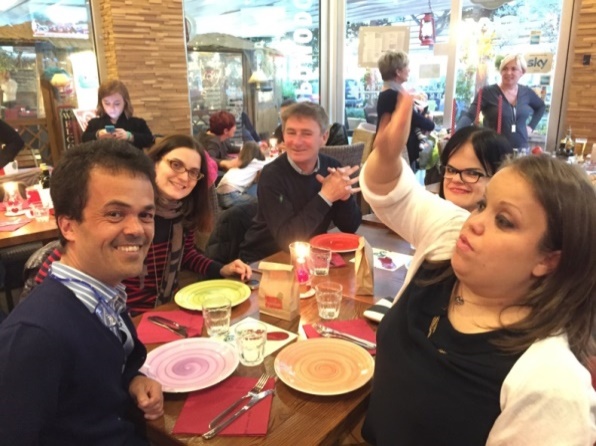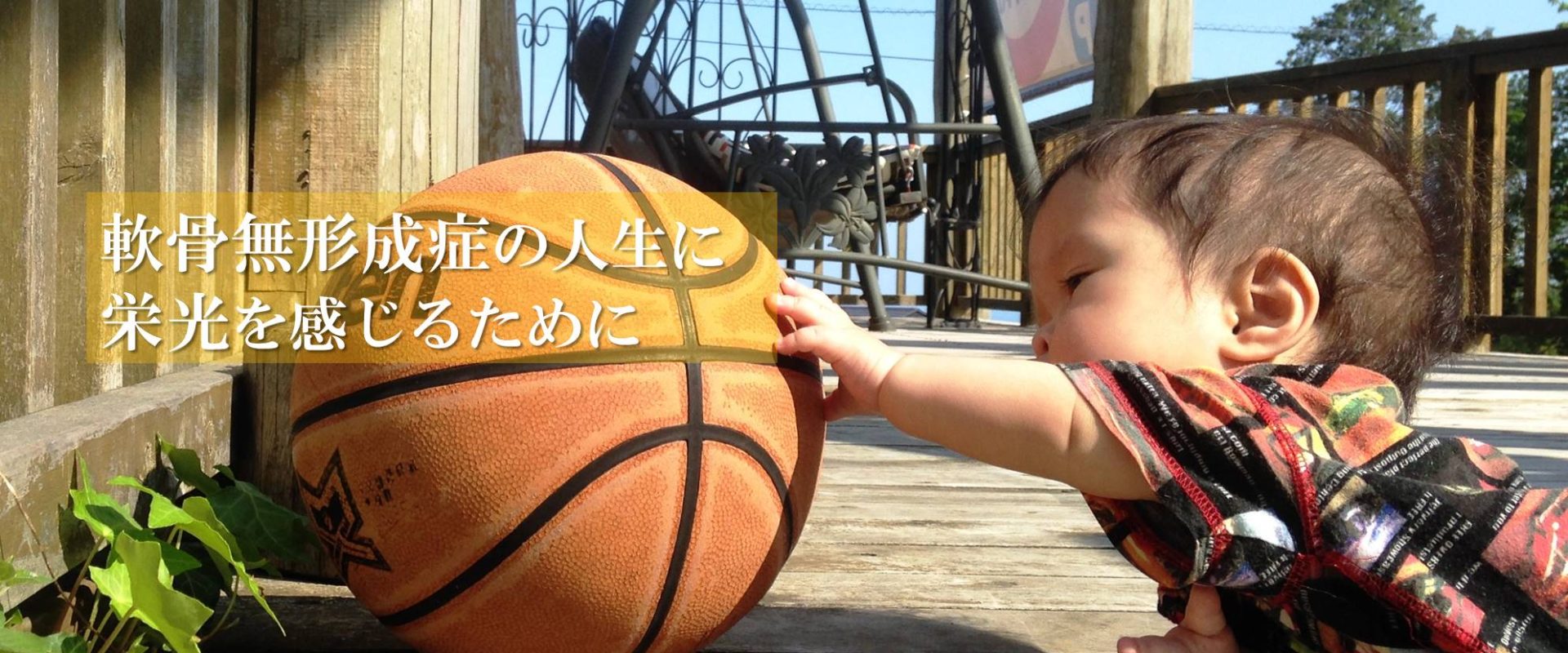2017年GTAは、軟骨無形成症を患いながら世界中で活躍するグローリーな方々からのインタビューや講話を提供するシリーズ企画 ”GLORY Person with Achondroplasia” をスタートしました。12月6日(水)17:00より、30年の歴史があるイタリアの軟骨無形成症支援団「AISAC」 代表のマルコ・セッサに御話いただきました。今回は、後半部分(軟骨無形成症と健常者を繋いできたことの成果および読者からの質問)についてインタビュー内容)をお届けします。
GTA based in Tokyo is planning to run lectures and interviews with people who suffer from achondroplasia but have succeeded in their fields through the world, called ” Glorious Person with ACH”. On 6th December Wed, Marco Sessa who is the president of Italian Organization for Achondroplasia named “AISAC” has gave us us an interview. In this time, we are going to post the 1st harf that are ”Achievement to connect people with Achondroplasia and normal”and Q&A from Japanese patients and their parents.
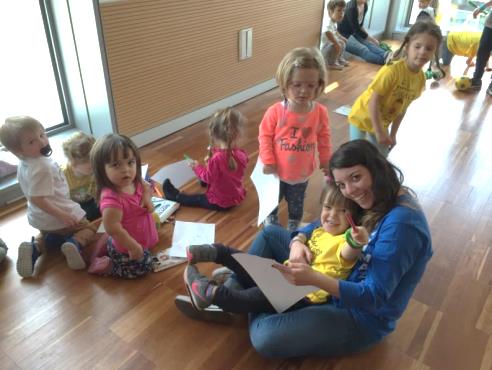
3. Achievement to connect people with Achondroplasia and normal
3. 軟骨無形成症と健常者を繋いできたことの成果
Could you tell me Notices of normal people, members delights and so on, do to AISAC’s efforts?
AISACの活動を通じて得られた一般の方々の気付き、会員の喜びなどは目に見える成果はありますか?
1stly, we AISAC appeal to schools strongly. In one of our program, we make the sensibility program and have exhibitions about “DIVERSITY” there. We let students make some questions in their classes. We will ask them “what is diversity” how do you feel with diversity? What is your identity? And how do you feel with your identity? I think that the most important thing is that do not divide normarity and achondroplasia. I heard one day before from a student that we are not normality and diversity; all people are different, completely deferent. That is really great opinion. We are not normal and diversity and we have to accept this. It is not that normal is toarget what you have to alive, and the diffrence or divesity that is not has to be disturbing it. All of us are diverse, one case each other and only one person.
私たちAISACは、学校に強く働きかけています。「ダイバーシティ(多様性)」に関する感受性をもってもらうプログラムや展示を行っているのです。「多様性とは何でしょうか?」「多様性についてどう思いますか?」「君たちのアイデンティティは何でしょうか?」「自分のアイデンティティをどのように思いますか?」といった具合に授業で様々な質問をしてみます。私がもっとも重要だと思うのは、「普通(健常)」と「軟骨無形成症」を別のアイデンティティとみなさないことです。 ある時、こんな意見を聞きました。「僕たちは普通でもないし、特殊な存在でもない。みんな各々違っているんだよ」と。すごくいい意見を聞きました。そうです。私たちは、ひとりひとりが特殊な存在でありそれを受け入れて生きています。私たちが生きていくうえで目指しているものは正常(健常)であることではありません。さらにいえば、違いや多様性は私たちが目指すものの妨げにもならないはずです。私たちはみな多様性をもっています。ひとりひとりが異なる個人ですし、唯一たったひとりの自分なのです。
Then, in other kind of approach, but I think it is important. Second thing is “INCLUSION”. People with achondroplasia but also other general disability has to do same alive as all other people. We have to go to school, to have same opportunity, to have friends with normality and to have normal job because this is real inclusion we have. We have to make alive with all others. Our achievement might be that the people who can understand diversity and inclusion are increasing and we are facing today that importance.
ここで違ったアプローチで話を進めます。私はすごく重要だと思うのが「インクルージョン(一体性)」です。軟骨無形成症だけでなく、身体に障害を持つ方々みんな周りのその他多数人々と同じように生きていかなければなりません。学校へ行き、同じ機会を得て、健常者の友達を持ち、普通の仕事を得ます。これが私たち人間の持つ現実、つまり一体性あるが故です。私たちは他のすべての人々と生を共にしていかなければなりません。こうしたことを感じる人が増えてきたこと、感じることのできる時代となってきたことが私たちの成果であると考えています。
Diversity and Inclusion are completely different approach and paradigm. We can say they are not 2 realities that are 1 normal and 1 diversity. Both are in same framework and we can live together better in the mix of paradigm.
多様性と一体性は、完全に相異なるアプローチでありパラダイムであるが、一方が通常で一方が多様性あるという二つの事実が個別に存在するということではないんです。同じ土俵で考えるべきであり、これらのパラダイムを一つに考え生きていくことが大事なのです。
Thank you for your sophicated opinions regarding the way of connection achondroplasia and normal. but in Japan it could be not easy to proceed the way of thinking. It is our reality of this contry.
軟骨無形成症と健常者をつなぐうえで、重要なご意見を伺いました。でも今の日本においてはその考え方を具現化することは極めて難しいといえるでしょう。
Off course, I know it is difficult. Diversity Inclusion is not easy. It would be easier if we live in another way. But if you want to feel normal, it is mandetory to face its difficult obstcle. もちろん、難しいですよ。ダイバーシティ・インクルージョンは容易ではありません。各々の道を選ぶのであれば、困難から解放されますが、もし、みんなと同じようにしたいと考えるのでしたら、困難な現実と向かい合わねばなりません。

4. Q&A (Please answer questions from Japanese patients and their parents)
4. 質疑応答(日本の軟骨無形成症の当事者やご家族からの質問にお答えいただきます)
Now we are moving on Q&A from Japanese patients and their parents through the GTA website.
それでは、GTAウェブサイトを通じて寄せられた日本の軟骨無形成症の当事者やご家族からの質問に答えて頂きたいと思います。
–1stly, from a grandmother who has 4 years grandchild with achondroplasia living in Hyogo Pref. –最初は、兵庫県にお住まいで4歳の軟骨無形成症の孫さんをお持ちの祖母様からです。
Q1: When was your most harsh moment and what was an event?
My harshest moment is around 11-14 years old. It is that we start to be adults, haven’t been adults yet. That is adolescence, I do not know if you like, that everyone experience as beginning of teenager in fact some of our friends start to have girlfriends and some of us not. Anyway, my most harsh moment was around 11-14 years.
Q1:一番大変な瞬間はいつでしたか?またそれはどんなでき事でしたか?
最も辛かったのは、11-14歳ぐらいのときでした。それは大人になり始めるときです。皆様がそれを好きかどうかはわかりませんが、それがまさに思春期ですね。実際まだ当時は大人になりきれていないんですね。ただ、そうしたときに、知人にガールフレンドができ出したりします。とにかく当時が一番辛かったですね。
Q2: And how did you overcome it in that situation?
I don’t know how that was. Probablly I think I was waiting for all of harsh moments passed and I didn’t have the good solution. And I do believe most of harsh memonts like this must be preparation period for next stage that is to be good adult.
Q2:どのようにしてその状況を打開したのでしょうか。
あまり覚えていないですね。おそらくそうした時期が過ぎ去るのを待っていたんだと思います。よい解決策はなかったように思います。重要なのは、こうした辛い時期は、次のステージに進むための良い準備期間であるということです。この場合は、しっかりとした大人になるための準備期間として認識すべきものでしょう。
I also remember in my memory that period is most harsh moments for me. So I think there is no big differences between people with achondroplasia and normal. So your feeling as quite normal.
そういえば、私もそうした10代の初めの時期が一番辛かったですね。その意味では、軟骨無形成症の人と健常者には大きな違いはないのかもしれません。今のマルコの回答は普通だと思うのです。
Yes, absolutely normal. But it would be more harsh moment for achondrolasia.
もちろん、そうした時期を迎えるのは極めて普通です。ただし、軟骨無形成症を持つ人々にとっては更に厳しい時期となると思います。
I undersatand your words “study and be patience” should be make sence from this context.
勉強して辛抱強くなりなさいというマルコの教えはこうしたところにも言えるのでしょうね。
-From mother who has 2 years child with achondroplasia
–続いては、2歳の軟骨無形成症をお持ちのお母様からの質問です。
Q3: Could you tell me about your limb lengthening story?
Q3:ご経験された骨延長術について教えてください。
My limb lengthening story is old. So it has changed everything compared to mine. Probably this mother wants to know current examples. There are lots of medical center to do limb lengthening in the world. For example, in Italy we have 5 famous clinical centers. It is really common for us to do it. It helps people with achondroplasia to improve good QOL. But we can’t eliminate achondroplasia. So limb lengthening makes you easy in your daily life, for example, driving a car, to take public train and bus, speaking to person and so forth.
This is improvement of quality of life. But we have to know that achondroplasia is not to be eliminated.
私の事例は、かなり古いので参考にはならないと思います。おそらく、このお母様は最新の事例について知りたいのだと思います。世界中には、多くの骨延長を手掛ける病院がありますし、イタリアでも5つの有名な病院で実施できます。
ただし、重要なのは、骨延長術は患者のQOL(生活の質)向上には寄与する一方で、軟骨無形成症そのものを治療することはできないことを覚えておかなければならいということです。
骨延長をすることによって、日常生活の支障は改善されます。例えば、車を運転したり、バスや電車に乗ったり、人と同じ高さで御話することなど。これらがQOLです。繰り返しますが、それでも軟骨無形成症を完全に治療することはできないことを覚えておかなければなりません。
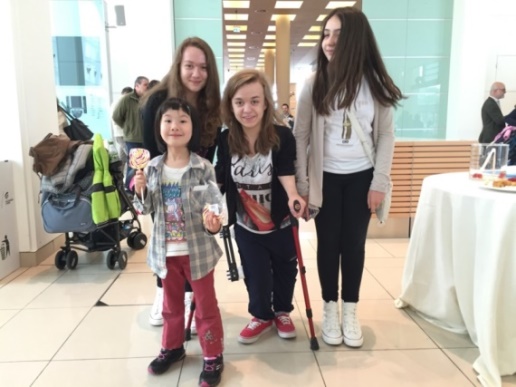
-From mother who has 4 years child with achondroplasia live in Tokyo.
–続いては、東京都にお住まいで4歳の軟骨無形成症をお持ちのお母様からの質問です。
Q4: Do you have any medical support for foreigners like ALPE?
Q4:ALPE財団のように外国人患者への医療支援は行っていますか。
Yes, we would like to help foreigners. But, we don’t have medical support like ALPE. ALPE is foundation. So they can make budget from donations and use that for help people achondroplasia.
But I can say since we work with medical centers in Italy, we can help connecting foreigners to them.
もちろん、外国の患者への支援もします。ただ、ALPEのような医療支援システムはありません。ALPEは助成財団であるため、寄付を募り予算化することで、軟骨無形成症の方々の支援に充てることができます。私たちは財政面での支援はできませんが、イタリアの病院とは共同関係にあるため海外の患者と病院をつなぐことはできます。
-From 22 years guy with achondroplasia working as Exercise Therapist –
続いては、22歳で身体療法士として働いている軟骨無形成症当事者からの質問です。
Q6: In Italy, do you have any supports played by people with achondroplasia but also other conditions?
Q6:イタリアでは、軟骨無形成症もしくはその他の疾患保持者に対して何らかの支援はあるのでしょうか。
Yes, there are some laws that could cover supporting people with a disability /rare disease like Achondroplasia. In Italy we have National Health Public Service (no extara health insurance needed), so we have guarantee the most health services without pay for it or paying a tax calculate on the personal incomes.
はい。障害・難病を持つ人の支援をカバーするいくつかの法律があります。イタリアでは、特別な保険をかける必要なく、また、個人の収入に関係なく、公的な国のヘルスケア・サービスがカバーされ、多くの場合、医療経費支払は発生しません。
By the way, do you have any athlete with achondroplasia to compete in the Paralympic Games? –ちなみにイタリアでは、パラリンピックに出場している軟骨無形成症の人はいますか。
No. because in Italy is really common to get limb lengthen operation. Once they have it, it going to be difficult to do in that support competitions.
I got it. In Japanese case, the argument point is that most likely it is difficult for people with achondroplasia to have disability handbook.
なるほど!日本の場合は、出場要件となる障害者手帳の有無がネックとなり軟骨無形成症の選手が競技に参加できないという問題があると聞いています。
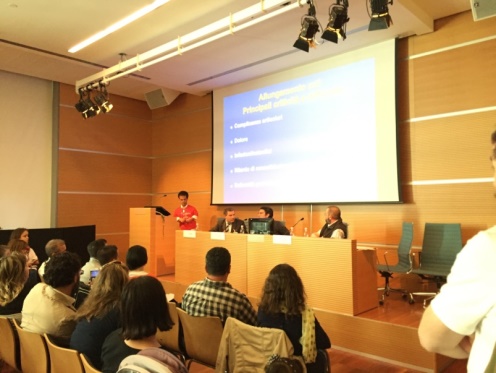
Q7: What is the biggest social problem surrounding achondroplasia?
Q7:軟骨無形成症を取り巻く最も大きな問題はなんでしょうか。
The biggest social problem is “gaze” and “prejudice” that we are not person but “dwarf” fairy tale character. People think people with achondroplasia from fantasy world.
We have to explain one by one that we are normal in terms of intelligence at work.
1つは、大衆が軟骨無形成症の人を凝視してしまうことです。偏見をもってしまっていることです。多くの人は、異世界から来た人のようにでも思っているんでしょう。
知的には問題がなく、しっかりと仕事ができる旨都度説明していかなければなりません。
-From mother who has 1 year child with achondroplasia having interests in rehabilitation for infants with Achondroplasia living in Tokyo
–続いては、東京にお住まいで1歳の御子様を持ち、軟骨無形成症のリハビリテーションに関心のあるお母様からの質問です。
Q8: In her impression, most likely people in Japan are not familiar with achondroplasia. So they tend to hesitate to speak to people with Achondroplasia. How about recognition from society in Italy? Do you have any specific support from the government?
Q8:一般のほとんどの東京在住者は軟骨無形成症への理解が進んでいなように思います。だから、見て見ぬふりというか、話しかけることすら躊躇する状況です。イタリアでは軟骨無形成症の人々への社会の理解や受け入れは、どれくらい進んでいると思われますか?
Answer of this question was said before. In other thing, I can say that today here in Italy the school system is very inclusive so children with achondroplasia start to be “present” and “familiar” to the society till from first year of life frequenting nursery school. In the past fifty years ago for example could be that some achondroplasia persons were marginalized. but today for fortune is not like; I know that Italian school system is very avant-garde.
既に話したとおりですね。加えて言うならば、学校教育において、今日、イタリアでは教育において総合の単元が組み込まれているため、軟骨無形成症の子供は、保育園通園時から、社会に親しみやすくなっています。過去50年前には、軟骨無形成症の人は社会から疎外されたことも多かったでしょう。幸運にも今ではそのようなことはなくなりました。
私は今のイタリアの学校制度は革新的なことを取り入れる傾向にあると考えます。
Q9: When did your parents tell you that you were with achondroplasia? And how did you feel at that time? Could you tell me how they enhance your “Self-esteem”?
Q9: 両親からいつ頃、どのようにご自身が軟骨無形成症であるということを告知されましたか?告知されてどのように感じましたか?両親はどうやってマルコ氏の自己肯定感を高めてくれたのでしょうか?
I don’t remember but I think my parents never told me. I was very lucky that I have younger in our family members. I had 3 bother and 1 sister. Since I was smallest and youngest, I was beloved. Off course they said to me that you are different from other friends. But they emphasized the differences to just among normal.
いつ話したかという質問の答えは、おそらく「話したことはない」でしょうね。苦境のフォローをどうしたかについても、よく覚えていません。幸いにして、良い家族や友人に恵まれていました。特に3人の兄と1人の姉がいる一番末っ子でしたので、私は一番小さく、普通に可愛がってもらいました。質問された方の期待に添えないけれども、親から説明を受けたことはないということですね。勿論、両親は、ほかの人とは違うよ、とは言っていました。それも人それぞれの違いの範囲であることを強調していたように感じます。
-From mother who has 3 years child with achondroplasia living in Australia
–最後になりますが、オーストラリア在住で、3歳の軟骨無形成症の御子様をお持ちのお母様からの質問です。
Q10: hobby or things you enjoy?
Q10:趣味や普段はまっていることはありますか?
My hobby is reading a book and taking a walk.
本を読むことや散歩することです。
How about AISAC management?
AISACの経営はでうどうですか?
It is not hobby but part of my work.
もはや趣味ではなく、仕事のようなものでしょうね。(笑)
Q11: Being short stature is a disadvantage for getting jobs in Italy?
Q11:イタリアでの就職において、低身長者であることは不利ですか?
No. Because there is Employment Non-Discrimination Law that guarantee equal opportunities.
不利ではありません。なぜなら、従業員差別防止法により、健常者と同等の機会が保障されているからです。
Q12: Society prejudges people with short stature in Italy?
Q12:イタリア社会における低身長者への偏見はありますか?
It is that I told you before. But it is less compared to other countries. So I could say “curiosity” rather than prejudges.
先述のとおりですね。でも他の国よりは少ないのではないかと思います。偏見というより興味というほうが正しいかもしれません。
Q14: Governments was of dealing with Achondroplasia? Any special rules or funding?
Q14:軟骨無形成症に対して政府は何か特別な措置や枠組み、資金援助などはありますか?
Yes, there is the chance to have a sort of social-aid both welfare payments and welfare found; this opportunities is for all people with a particular disability grade.
はい、社会福祉の機会や資金援助は十分にあります。またそれらは障害を持つ人々全てが対象となっています。
Please give us message to people with ACH and their families in Japan.
日本の軟骨無形成症の方々、そしてご家族の方にメッセージをお願いします。
Believe in your own identity, improve yourself, grow, not (only) in height, but in your inner reality. Your strength is the awareness of your condition and what you can do in person to change and transform your life.
みなさま方が持つ独自の個性を信じて、各々自身の成長に尽力してください。それは背の高さだけでなく、みなさまの内面に存在するリアリティそのものをです。みなさまの強みは、あなた方のコンディション(状態/個性)を理解し、人生の変革を自力でなし得ることができることに他なりません。
That’s all for today. Thank you very much to talk about your precious story and opinion.
ここでお時間です。今日は、貴重な御話やご意見をお聞かせ頂き本当にありがとうございました。
It was my big pressure to talk to you even Skype. I hope you to come back to Italy again.
スカイプでの御話ではありましたが、とっても楽しかったです。またイタリアに来てくれることを願っています。
